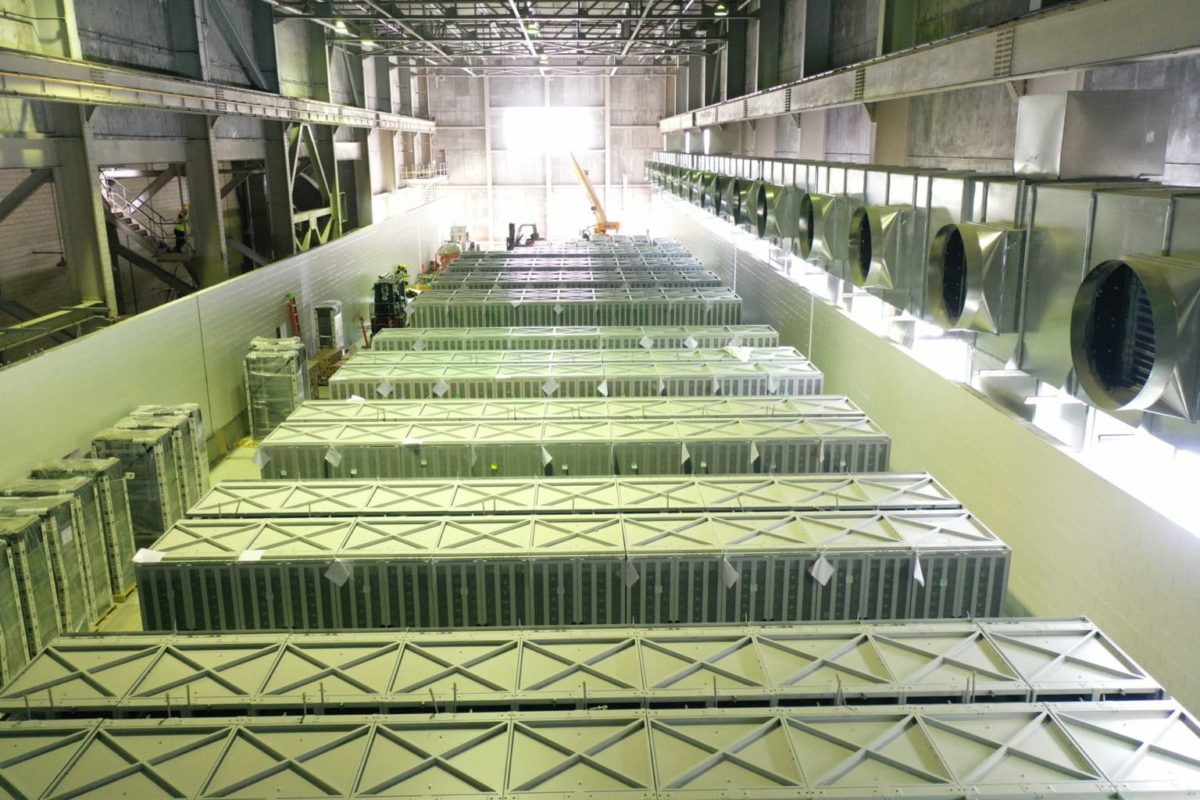From pv magazine USA
Less than a year after it went into service, the Moss Landing Energy Storage Facility in California was forced offline on Sept. 4 when an unspecified number of batteries overheated.
Local fire crews were called around 8 p.m. to a reported structure fire, but no fire was found. News reports said that first responders instead found battery racks that had been scorched and wires melted. Fire crews remained on the scene until Sunday.
In a statement, Vistra said that the storage facility experienced “an overheating issue with a limited number of battery modules.” The incident affected the facility’s Phase I 300 MW/1,200 MWh system.
Vistra said that risk mitigation and safety systems “worked as designed” and detected that modules were operating at a temperature above operational standards. The company said that targeted sprinkler systems were activated and aimed at the affected modules. Vistra said that the overheating was “controlled and contained” without the need for outside assistance.
Vistra said it would keep the entire facility offline as it investigates the root cause of the incident in partnership with its engineering contractor, Fluence, and battery manufacturer, LG Energy Solution. Vistra was uncertain on the timing of the return of the facility, pending an investigation and any needed repairs.
A spokesperson for Vistra told pv magazine in an email that the company cautioned against insinuating that the batteries caused the incident. “We are very early in our investigation and have not determined a root cause,” said the spokesperson.
The Phase II 100 MW system, which is located in a separate building on site and went into service in August, was not affected by the event. It is currently available for operation.
Fire safety
The 300 MW Moss Landing facility that suffered the battery overheating event entered into service in December. The adjacent second phase entered into service in mid-August and included 4,500 TR1300 battery racks from LG Energy Solution.
When the second phase entered into service, LG said that its lithium-ion-based batteries met fire safety standards, and that its racks had been tested to verify compliance with UL9540A (Standard for Safety Test Method for Evaluating Thermal Runaway Fire Propagation in Battery Energy Storage Systems), to ensure that any fire event would not be propagated to adjacent battery racks.
The TR1300’s rack design also meets the American Society of Civil Engineers’ ASCE 7-16, assuring its stable operation even during external environmental changes such as seismic tremors. The standard is now part of the California Building Code.
LG has been working to improve its battery technology since an April 2019 accident involving one of the company’s utility-scale lithium-ion battery arrays at an Arizona Public Service location. A thermal runaway event there caused an accumulation of gases in the container that housed the batteries. Those gases ignited when first responders opened an access door to investigate reports of smoke coming from the container. Two firefighters were seriously injured.
In late May, LG Energy Solution said it would replace, at its own cost, lithium-ion battery cells used for certain energy storage products that were manufactured between April 2017 and September 2018. The replacement program came after overheating incidents were reported.
The company said in a statement that it determined that there were issues in the early production processes for electrodes used in potentially affected batteries. Reports said the batteries were produced at the company’s factory in Nanjing, China. The replacement program could cost around $350 million.
New batteries will incorporate manufacturing process improvements. The company said it also would implement remote modifications to reduce the potential for overheating while owners wait for their replacement units. LG Energy Solution also will update its battery diagnostic and control software. And it said that field inspections would be undertaken to monitor and minimize the potential for further incidents.
This article was updated on Sept. 7 to clarify that Phase I of the facility entered service in December 2020 and was affected by the overheating incident.
This content is protected by copyright and may not be reused. If you want to cooperate with us and would like to reuse some of our content, please contact: editors@pv-magazine.com.




Prior to System acceptance testing and turn over – what did the field trial test reports show? Were any defects or deficiencies noted, corrected and retested? Did anyone pay attention to the environmental conditions within the equipment enclosures during initial load testing? Who had that responsibility? LG? What could possibly go wrong with that line of logic?